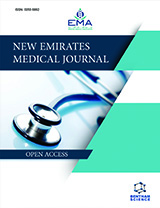Abstract
Purpose: This study aimed at evaluating the diagnostic performance of standard greyscale and inverted greyscale Chest X-ray (CXR) using Computed Tomography (CT) scan as a gold standard.
Methods: In this retrospective study, electronic medical records of 120 patients who had valid CXR and High-resolution CT (HRCT) within less than 24 hours after having a positive COVID-19 RT-PCR test during the period from May 19th to May 23rd, 2020, in a single tertiary care center were reviewed.
PA chest radiographs were presented on 2 occasions to 5 radiologists to evaluate the role and appropriateness of standard greyscale and inverted greyscale chest radiographs (CXR) when images are viewed on high-specification viewing systems using a primary display monitor and compared to computed tomography (CT) findings for screening and management of suspected or confirmed COVID-19 patients.
Results: Ninety-six (80%) patients had positive CT findings, 81 (67.5%) had positive grey scale CXR lesions, and 25 (20.8%) had better detection in the inverted grey scale CXR. The CXR sensitivity for COVID-19 pneumonia was 93.8% (95% CI (86.2% - 98.0%) and the specificity was 48.7% (95% CI (32.4% - 65.2%). The CXR sensitivity of detecting lung lesions was slightly higher in male (95.1% (95% CI (86.3% - 99.0%)) than female (90.0% (95% CI (68.3% - 98.8%)), while the specificity was 48.0% (95% CI (27.8% - 68.7%) and 50.0% (95% CI (23.0% - 77.0%) in males and females, respectively. However, no significant difference was detected in ROC area between men and women.
Conclusion: The sensitivity of detecting lung lesions of CXR was relatively high, particularly in men. The results of the study support the idea of considering conventional radiographs as an important diagnostic tool in suspected COVID-19 patients, especially in healthcare facilities where there is no access to HRCT scans.
CXR shows high sensitivity for detecting lung lesions in HRCT confirmed COVID-19 patients. Better detection of lesions was noted in the inverted greyscale CXR in 20.8% of cases, with positive findings in standard greyscale CXR.
Conventional radiographs can be used as diagnostic tools in suspected COVID-19 patients, especially in healthcare facilities where there is no access to HRCT scans.
Keywords: COVID-19, Coronavirus, Ground-glass opacity, X-ray, Computed tomography, HRCT, RT- PCR test.
[http://dx.doi.org/10.1002/jmv.25707] [PMID: 32052466]
[http://dx.doi.org/10.1002/jmv.25674] [PMID: 31944312]
[http://dx.doi.org/10.1016/S0140-6736(20)30251-8] [PMID: 32007145]
[http://dx.doi.org/10.1148/radiol.2020200370] [PMID: 32053470]
[http://dx.doi.org/10.2214/AJR.20.22954] [PMID: 32130038]
[http://dx.doi.org/10.1148/radiol.2020201160] [PMID: 32216717]
[http://dx.doi.org/10.2214/AJR.20.22975] [PMID: 32134681]
[http://dx.doi.org/10.21037/qims-20-564] [PMID: 32489929]
[http://dx.doi.org/10.1016/j.ajem.2020.04.016] [PMID: 32312575]
[http://dx.doi.org/10.1016/S1473-3099(20)30086-4] [PMID: 32105637]
[http://dx.doi.org/10.12669/pjms.37.5.4290] [PMID: 34475900]
[http://dx.doi.org/10.1148/ryct.2020200034] [PMID: 33778547]
[http://dx.doi.org/10.1177/00368504211016204] [PMID: 34424791]
[http://dx.doi.org/10.1016/j.radi.2020.04.017] [PMID: 32423842]






























